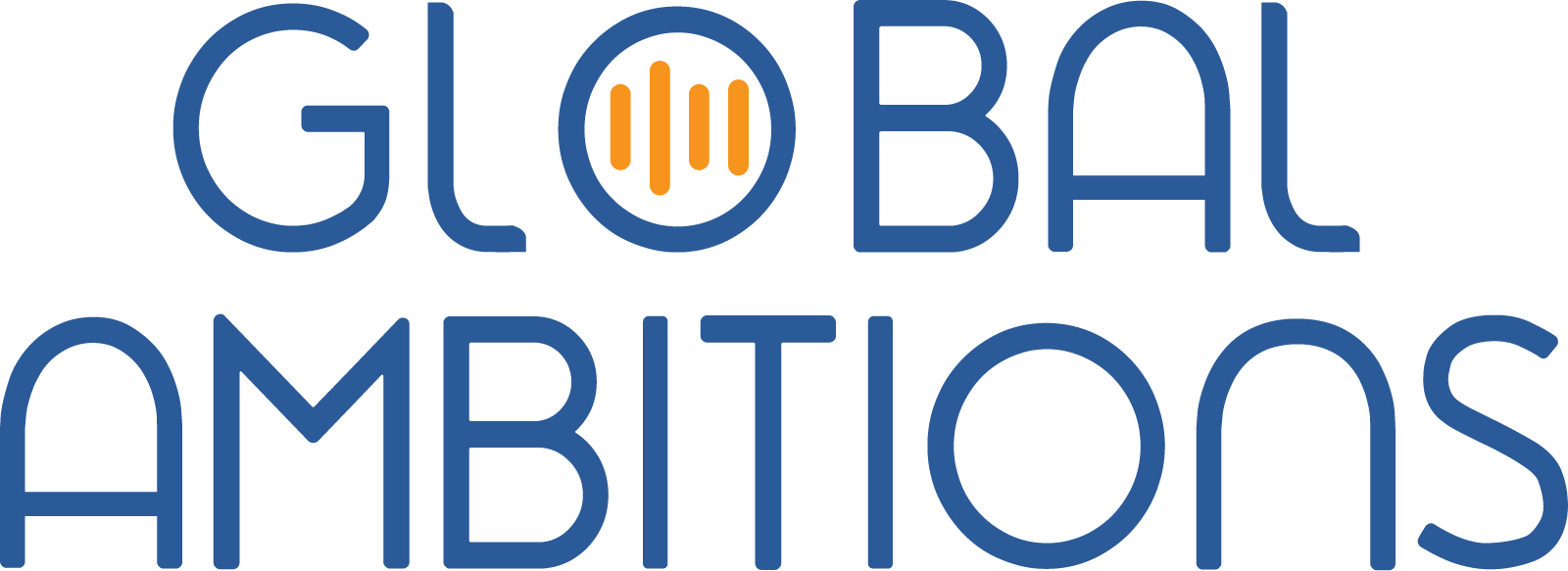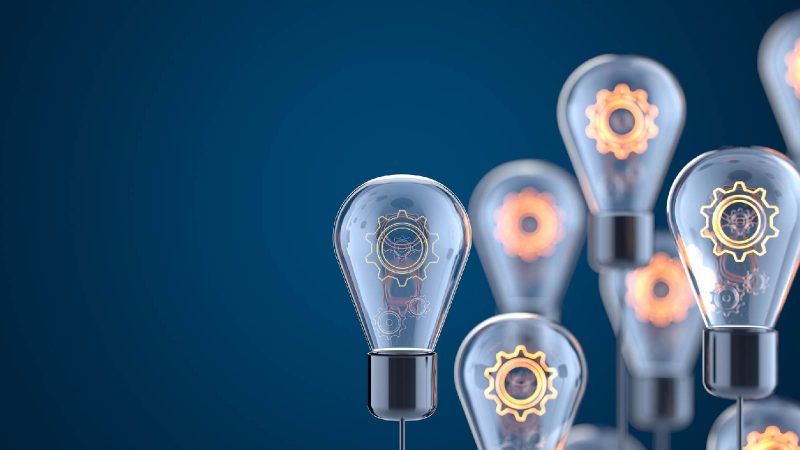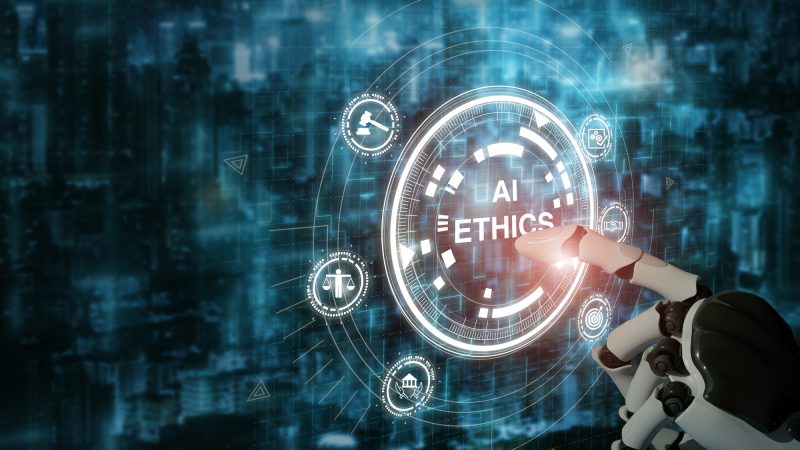With Mark Hjerpe, Head of Global Revenue at Intento
Below is a full transcript of this episode
Stephanie Harris
Hi. My name is Stephanie Harris and I’ll be your host today on Global Ambitions. Our guest is Mark Hjerpe and he is the Head of Global Revenue at Intento. Mark, welcome to the program.
Mark Hjerpe
Thanks for having me.
Stephanie Harris
So our topic today is machine translation and some of the new innovations that are happening in this space. But before we jump into that, can you give us a few words about your background, Mark?
Mark Hjerpe
Sure. I’ve been… pretty much my whole career I’ve spent in localization. I started in localization about 25 years ago, and I’ve worked with most of the big industry players. I spent 12 years at Transperfect. I spent time at Smartling, ran global sales and marketing for RWC Life Sciences. Worked at a number of teams. So I’ve been in the space for my whole career and I’ve been with Intento now for about two years. So I’ve been focusing squarely on machine translation for about two years.
Stephanie Harris
Well, I know that Intento has been making a big splash in the space at the moment. Can you tell us in just a few words, what does Intento actually do?
Mark Hjerpe
Yeah, we’ve been around for about six years and most customers when they start talking to us, they say, “Yeah, we’ve heard about you guys, but what exactly do you do?” In essence, what we do, simply put, is help customers build and manage their machine translation programs. And in doing that, we do three primary things. We help select the best machine translation engine for our customer’s specific language pairs and content types based on their domain. And then we help connect those engines to their use cases through our MT hub platform. And then we help improve those engines over time through an MT maintenance program and a feedback loop. So we’re gathering reviewer and user feedback on a real time machine translation. So it’s select the best engines out there, connect them to your use cases through the hub and then improve the engines over time to increase ROI.
Stephanie Harris
What do you see as the biggest problem that best-fit machine translation is solving for clients in the industry?
Mark Hjerpe
I think it’s the fact that content volumes are getting bigger and bigger. The localization managers have more and more pressure from more and more departments from leadership, saying we need more and more content localized into many more languages. So there’s you know, we find that about 5% of enterprise content can be translated with human workflows. That’s the challenge that we solve, it’s that other 95% of content in all those other languages that you’d like to go into and all that content that you’d like to translate, but you don’t have the budget, you don’t have the time. So that’s what we do is we help our customers attack that other 95% of content and translate that into all the languages that they want to translate into.
Stephanie Harris
Okay. So how does a customer even start with that kind of project? Because it sounds like it’s a little bit different than your typical translation or localization project.
Mark Hjerpe
Yeah, it is different. Typically, customers, most, I’d say in the past couple of years we’ve seen a real inflection point in machine translation. I think we’ve seen that machine translation has gotten better and better to the point that there are 40 really good machine translation engines out there. So there’s a wide choice. There’s a lot to choose from. And I think that’s one of the challenges is which engine do you select? Do you talk to your translation services company to help you select engines? Do you talk to your translation management provider to help you select engines. Do you go directly to the providers themselves to to use their engines? What we do is we help guide the customer, guide the enterprise client to help them understand which engines are going to be the best for them and then help them build their Machine Translation Program.
So what that looks like is a typical customer will come to us and they’ll have, you know, ten languages or ten or 15 languages that they translate into, and they’ll have a number of use cases for their content. They’ll have their website content, their knowledge base content, their customer support content, their community content. And what we do is we try to help them focus on that initial use case that will be most important for them to review machine translation. And they may be already using a couple of machine translation engines. Maybe they’re already using Google and Microsoft, and maybe they want to find out if there are better results that they could be achieving from other engines. So the first step is we work with them to find that right use case, what business case are they going to focus on for their first step into machine translation?
Secondly, we help them figure out what initial languages they want to start with. Sure, you can start with 15 languages, but that’s a lot of work. There is a cost to that. So we recommend starting with two or three of their most important languages. And the first step in working with best-fit MT is to evaluate those engines. So we go through a rigorous evaluation process where we’re taking their chosen languages, we’re taking what we expect, you know, the ten or 15 best engines that we think are going to be the best fit for those language pairs. And we go through an evaluation process where we train the custom engines with the customer’s content, their team segments, 100,000 segments, train the custom engines, compare the output from the custom engines to the output from the stock engines, and find the four finalist engines. We go through a whole scoring methodology during that process.
The whole evaluation process takes 4 to 6 weeks, and once we’ve got those finalist engines, we do an early stage linguistic quality assessment to assess the results of those finalist engines, to see how much effort is still required in post-editing. Right, whichever engine requires, the least amount of post-editing effort is the winning engine. We provide that winning engine and a backup engine to the customer, along with a 40-page report detailing all the data that went into making those decisions. That’s just one step in the process. With those best-performing engines, we then add a number of customizations that aren’t available directly with the MT providers themselves.
So we customize and fine-tune those engines’ tone of voice, customization, profanity filtering, abbreviation support, and all types of customizations to make the engines even smarter. Then the customer has those engines, so we connect them to their use case. And this is your typical pilot, your typical proof of concept, right? Connect them to their use case. Let’s say general localization workflow for general documentation. They’ll start using the trained engines in their workflow and they’ll spend a month looking at the results, experiencing, and working with the resulting engine output in their typical workflows.
We connect with all TMS, we connect with all customer support systems, and community systems. Again, machine translation has gotten so good these days that if a client is using Microsoft or Google or other engines, they’re shocked by the results that they’re getting. I mean, we get up to 97% end-user acceptance. So the end-users are comfortable with the output of raw machine translation, that’s after working with us for about a year training, refining the engines, 70% reduction in editing effort. So that’s how companies start working with us and it’s a pretty natural progression to then onboarding our platform.
Stephanie Harris
So it sounds like it’s a pretty complicated process. There are a lot of steps involved in getting things going. I’m sure challenges pop up along the way. For a lot of your clients, what are the most common challenges that you see that you can help them overcome as they’re getting this whole process up and going?
Mark Hjerpe
Maybe the status quo is the biggest challenge sometimes. Some customers come to us and they’re absolutely ready to go into machine translation. They’re eager and they want to explore machine translation. But sometimes you’ve got customers who maybe the localization manager is ready to explore best fit machine translation, and they start going down the road and then other departments and other stakeholders chime in and people have concerns. Oh, well, we used machine translation five years ago and it was, it just was no good. I’m sorry. I don’t think we should be using it. So I think that can be a blocker when you don’t build consensus at the beginning. Maybe not consensus, but at least make sure that the major decision-makers are on board.
Nothing worse than seeing a localization manager that spends two or three months leading up to working with us. And they’re so excited. They’re like, Wow, this is going to change our localization program. And then they get shut down by some senior manager that they didn’t think to get buy-in from at the beginning. So I think that’s one of the challenges that can happen.
Another one is sort of the other end of the spectrum, wanting to jump in and do everything at once. So what our biggest, our biggest customer is IKEA, and they work with 20 different use cases and departments with them in 84 language pairs. So that’s a really big MT program. But most customers want to start small. You don’t want to try to dive in and do everything at once. So that’s another challenge, is prioritizing your content.
Take one of those projects that somebody sent you with 2 million or 5 million words and you’re like, I’m never going to be able to do that into those five languages they want. Right. Yeah. Give it a try. Do a trial. Do a couple hundred thousand words of it with us in those languages. Send it to your stakeholder and say, what do you think? And usually, they’re going to be like, oh, this is great, let’s do it. And then suddenly for 5% of what you were going to have to pay for human, you’re achieving this project 5 million words, and suddenly that stakeholder is super happy. And then some other department says, Well, wait, what about us? We have this. What about our community platform? Can we do user-generated content with machine translation? Absolutely. I mean, that’s the cool thing about MT these days is it’s not just for localization post edit, it’s for customer support with live chat and community platforms, with user generated content and user reviews. All this stuff that was never before approachable with human translation, machine can now attend to that.
Stephanie Harris
So if you have a client who comes in and they say, Hey, we want to have some native machine translation within our software system, is that something that you help with as well? Help them embed that and get that all setup?
Mark Hjerpe
Absolutely. Yes. So we have out-of-the-box integrations for lots and lots of products. We’ve got integrations already up and running for almost all the teams and lots of the support platforms and the community platforms. But we also spend a lot of time with custom integrations. That’s, you know, we’ve got an API that’s really, really easy to set up for a multitude of uses. And specifically, our patented API was developed to make it really easy when you integrate with one machine translation engine or AI engine machine, voice content, generators, what have you, it makes it really easy to integrate with many more engines, with very little coding, with very little effort.
Stephanie Harris
All right. Well, that’s that’s a cool thing. Do you have any other really great success stories from your clients that you would you’d like to share with us?
Mark Hjerpe
Well, I’m really lucky. I’ve been in localization my whole career, and I’m really lucky just in the past year, year and a half. I mean, we’ve onboarded so many wonderful clients like Gap and Subway and Zendesk and Stripe and Procore and all these great companies that we love working with. So there are a lot of success stories. One I would highlight because it goes the whole spectrum of sort of that early stage “I need to onboard MT. what am I going to do?” to a real success story is Subway.
So Carrie Fisher, the Loc manager at Subway, she actually presented at a conference recently with us. And when she first saw our platform and she first started to review the best fit MT offering, she said, Wow, this is pretty amazing. This is what I’ve been waiting for. And that was about a year and a half ago. And she started by having us evaluate and select the best engines for about, I think it was six or seven language pairs to start in a very large volume project and knowledge base. And that went really, really well. And she then started using our machine voice technologies and was so blown away by the quality of the machine voice that she went ahead. I think it was a ten language project with machine voice for training videos and expanded into other use cases. The legal department using best fit MT for their lawyers, communicating around the world among their legal staff. And at the end of the first year, working with Subway, working with Intento, Carrie said she had saved $1.5 million and saved two years of labor.
Stephanie Harris
Wow.
Mark Hjerpe
Yeah. And the icing on the cake is she got the best review of her Career based on these initiatives that we have worked with her on. So that’s what I love. It’s awesome. You know, loc managers have challenging jobs. There’s a lot of responsibility and I think it’s a growing responsibility these days. Their jobs are getting even more and more important. So I love being at a company that can really solve problems and help them do their job so much better and get recognition for it.
Stephanie Harris
Wow, that’s really cool. Okay, so what are some things that get you excited at the moment in this field?
Mark Hjerpe
What’s most exciting to me, I’d say, about the technologies that we’re employing for our customers is probably machine voice. As I mentioned, Subway uses machine voice with us. The loc partner that was involved in that machine voice project with Subway, was so excited about the results as well. They’re now onboarding us with another one of their huge customers and we have many clients coming to us now where machine voice is the big thing for them this year.
And actually, I think if 2020 and 21 were the years for machine translation, 22 is definitely the year for machine voice, text to speech. So the most exciting thing I think is not just machine voice for training videos, which we’re doing a lot of now. At the far end of the spectrum, there is voice to voice. So let’s say customer support. You’ve got a German-speaking customer and an English-speaking support operator. You get the German question coming in and there’s three machines in the middle. There’s machine transcription into German text, machine translation from German to English, and then machine voice English text to English voice. So and then the support operator, this is all real-time, the support operator replies, “Here’s how you fix your printer” in English. Three machines. German to English real-time conversation supported by three machines. That’s awesome. And that’s in beta now. It’s pretty awesome.
Stephanie Harris
Yeah.
Mark Hjerpe
So keep an eye out for that.
Stephanie Harris
Yeah, definitely will. Well, there are lots of exciting things going on, so we’ll definitely be keeping in touch with you as well as keeping in touch with the industry going forward. So thank you so much, Mark, for coming on the program and I’m sure we’ll talk to you again soon.
Mark Hjerpe
Great. Thanks so much for having me. It was fun.

Mark Hjerpe
Head of Global Revenue at Intento




